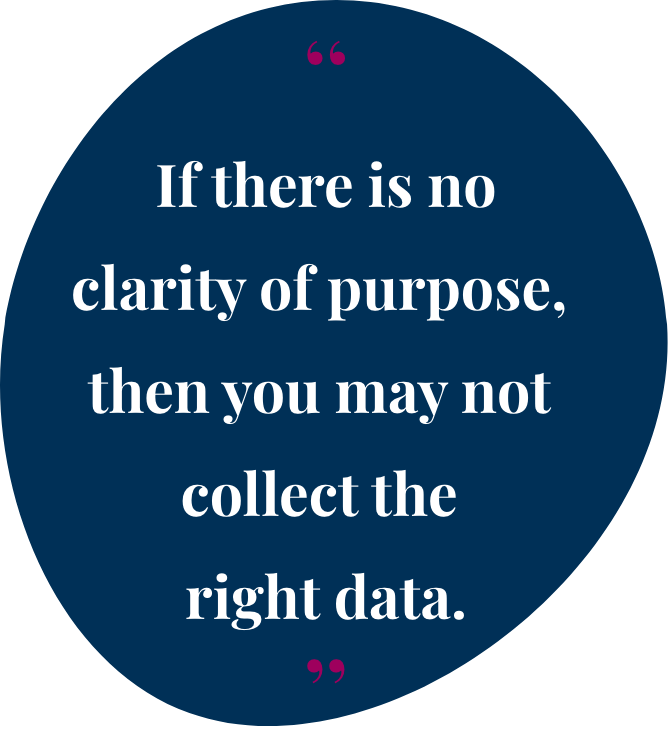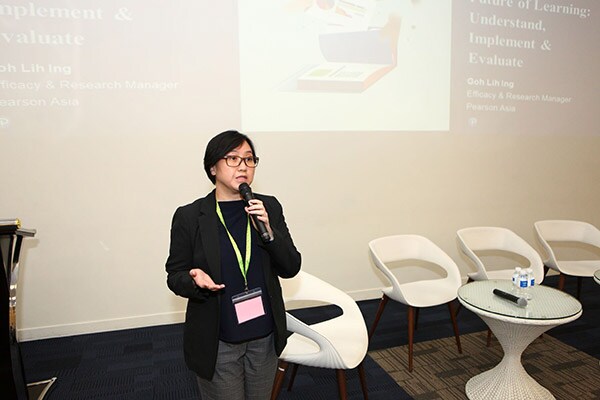Living in a world that is continuously changing, we need to evolve and keep finding new ways to learn. By understanding what motivates and engages students, we can create more advanced digital and collaborative learning processes which prepare them for success in the future.
At Pearson’s recent Open Ideas Forum held at the British Chamber of Commerce, our Efficacy and Research Manager, Ms Goh Lih Ing, was joined by key university educationalists in Singapore to discuss 'Learning Technologies as the Future of Learning’.
Student learning in higher education is impacted by several factors, the most critical being student engagement. It is deemed more important than graduate outcomes, recruitment and talent attraction, retention and learning analytics. So finding ways to boost student engagement is welcomed by those teaching at university level.
Nowadays, with technology used in every aspect of people’s lives, it seems logical for it to be part of education. From online degrees to AI and smart devices, people see the future of learning made easier and more engaging with technology. Although many people expect digital and virtual learning to be the new normal in the next decade, is this likely?
Dr Ho Shen Yong, Associate Dean (Academic), College of Science of School of Physical and Mathematical Sciences at National Technological University, uses technology to help in his lectures. He teaches a large class of students with very diverse backgrounds and knowledge bases, within a limited time scale - many of whom have not studied physics at A level. With traditional lecturing methods too restrictive for his needs, he sees the solution to his challenges as technology. Implementing these relevant learning technologies provide him with more possibilities for manoeuvre and enhancing effectiveness.
Dr Ho Shen Yong, Associate Dean (Academic), College of Science of School of Physical and Mathematical Sciences at National Technological University, uses technology to help in his lectures. He teaches a large class of students with very diverse backgrounds and knowledge bases, within a limited time scale - many of whom have not studied physics at A level. With traditional lecturing methods too restrictive for his needs, he sees the solution to his challenges as technology. Implementing these relevant learning technologies provide him with more possibilities for manoeuvre and enhancing effectiveness.

Using technology, he constructs challenges and asks questions to his vast class during lecture sessions, requesting them to reply in real-time online. It enables him, and every student, to instantly see each answer on the main screen. At a glance, commonalities, and misconceptions are easily identified and immediate feedback provided within a few minutes, instead of days later and out of context. Dr Ho can also quickly gauge if he is teaching effectively and at the right pace, and provide explanations and answers in the exact moment they’re required.
With his students eager to use learning technologies and enjoying this form of participative learning, it’s proving a successful tool. However, as effective as this use of technology is, it cannot replace every aspect of teaching. Individual face- to- face time and tutorial activities outside of lectures are still essential, to allow students to ask their own questions and interact one-on-one with the lecturer.
Another example of technology-assisted learning is the Accounting Challenge App (ACE) created by Dr Seow Poh Sun, Associate Professor of Accounting (Education) and Associate Dean (Teaching and Curriculum) of the School of Accountancy at Singapore Management University. Free to download, this app provides a proactive mobile learning platform. Dr Seow launched the app in 2013 to enhance accountancy learning outside of the classroom. Designed to engage students through mobile gameplay, it asks randomised questions with points awarded for correct answers. Able to review questions and answers, and a leader board to create a competitive angle, it is a useful supplementary learning tool for students. With it being both fun and convenient, students can play whenever and wherever it suits. The interactive format retains student engagement, challenges them to think quickly and facilitates knowledge Retention.
The ACE app is an innovative and effective way to improve student engagement and enhance learning, but there are challenges and issues. Firstly, it requires support and funding from management. There are also ongoing issues with keeping the target audience interested by updating information and ensuring the learning objectives of their accounting course are still being met. General maintenance, scalability, security, software updates and internet connection challenges are also factors that need to be considered.

DIY education is another area where technology could be a viable option. With ready access to technology and a changing global economy, people are taking matters into their own hands. The problem with DIY learning is that often students may not be self-aware enough to know what they need to learn or what their required objectives are. They may lack fundamental skills and knowledge to complete DIY learning. Pedagogical intent and design still have to come from the educator who has a set of clear learning objectives. A student may have a very distinct goal, but if it's not defined and content is not available online, then using technology is ineffectual.
There are other scenarios where technology learning will not necessarily solve a learning issue, for example, mastering how to play an instrument via digital means - but maybe in the future VR will change this? There are also elements of learning that require interaction with fellow classmates, which technology cannot necessarily achieve. This is where customisation is required, so students get the right technology in the right format.
Measuring success of learning technology is also tricky as it depends whether you measure perspective or measured outcomes. If there is no clarity of purpose, then you may not collect the right data. And if that data is not collated and organised in a way that you can see or interpret the results clearly, it is useless.

Passionate and dedicated educators constantly strive to help students understand concepts and ideas by explaining them in the most effective way; with the more motivated likely to explore more creative and technological options to do this. However, many educators are unsure about technology and how to implement it; and with no best approach or one size fits all solution, there is often confusion about its use and scalability. They need training and information to prepare them, enable them to upskill and subsequently shift their mindset.
Whatever our background, we must ensure that we are not just using technology for the sake of it. There are instances where technology is a cost-effective way to teach and reproduce real-life scenarios. Also, in terms of augmenting learning experiences, it is an excellent tool in terms of engagement, teaching, and delivering appropriate content. When used in the right way, we can make learning and teaching better and ensure good education takes place beyond disciplinary boundaries.
Whether the new normal is technology-led or not is yet to be decided but we do know it needs to be adequately constructed and requires ongoing shaping. When we begin to see learning technology as an extension of present teaching and learning experiences, then we can certainly see a valuable place for it in university education.
Read more











